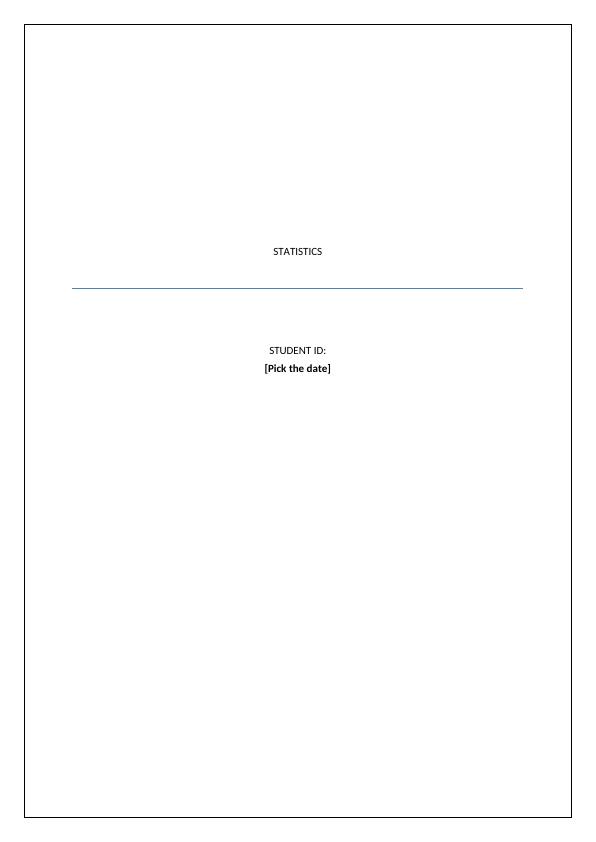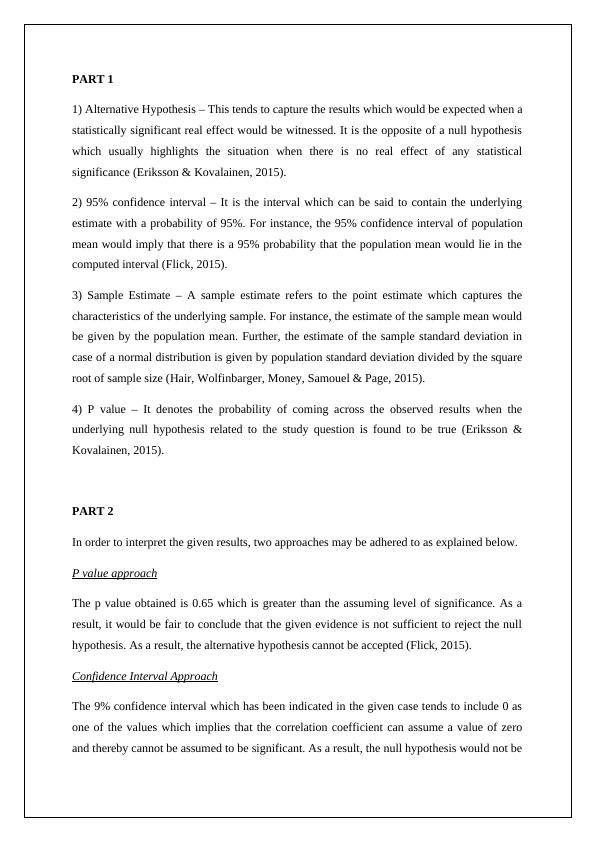Understanding Alternative Hypothesis, Confidence Interval, Sample Estimate and P Value in Statistics
4 Pages505 Words266 Views
Added on 2023-06-05
About This Document
This article explains the concepts of Alternative Hypothesis, Confidence Interval, Sample Estimate and P Value in Statistics. It also provides two approaches to interpret the given results - P value approach and Confidence Interval approach.
Understanding Alternative Hypothesis, Confidence Interval, Sample Estimate and P Value in Statistics
Added on 2023-06-05
ShareRelated Documents
End of preview
Want to access all the pages? Upload your documents or become a member.
Pearson Linear Correlation Test: Assumptions and Key Concepts
|4
|664
|141
Business Statistics - Assignment PDF
|4
|699
|137
Statistical Analysis on Housing and Electricity Expenditure in USA
|5
|523
|52
Statistical Analysis of Diameter of a Product
|5
|630
|296
QAB 105 Assignment On Quantitative Analysis for Business
|8
|630
|81
STATISTICS. Application Problem. STUDENT ID:. [Pick the
|3
|319
|59


